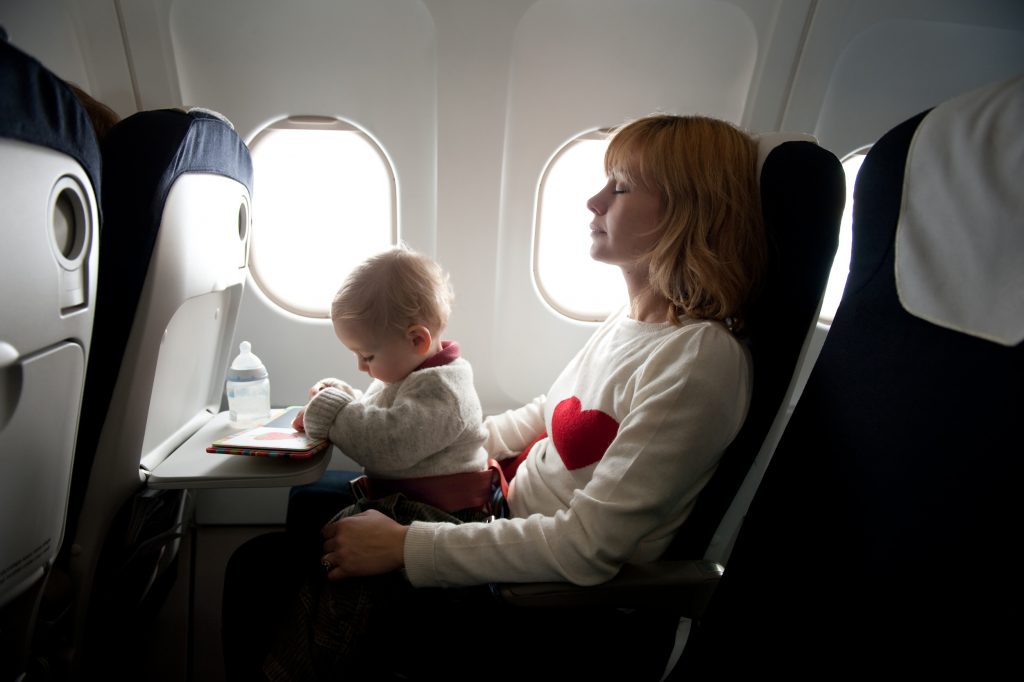
When:
My baby had her first flight when she was 6 months old. As it was her first flight, we chose a nearer destination (Vietnam). This advice was given by relatives who were frequent travelers whose theory was that try a short flight first to see how baby takes to it, if she does well then she is ready to be a jet setter with her parents. Air travel is usually recommended for babies past the six week mark, unless there is a pressing need for the baby to fly before then.
Tried And Tested Tips:
1. Plan and prepare beforehand.
This will help you to pre-empt any possible situations and thus you will be equipped to troubleshoot when it happens. Also inform the airline that you are travelling with an infant, in my experience, the flight attendants and ground staff are very helpful when you have an infant in tow. Budget airlines might charge for a front seat but I have not’t been charged on full service flights. Request for a bassinet if you so require.
2. We Avoid Packed Flights
This increases the possibility of the airline allowing you to move to a place that has a seat for you as well as an empty seat in the same row. We found the extra seat useful when I had to nurse her in privacy. This will allow you to have your space at no extra charge. Also keeps inconveniencing of other passengers to a lower level in case baby fusses.
3. Avoid Multiple Transfers
Take off and landings are the most difficult for the baby because of the change in cabin pressure.
4. Latch Baby On During Take Off And Landing
The suckling and swallowing action helps to ease discomfort of the baby. If you are not breast feeding, offer a pacifier or small sips of water.
5. Taking Turns To Eat And Drink
If you are travelling with family take turns to eat and drink. This ensures that baby will always be under watchful eyes. Also prevents food or drinks from spilling onto baby.
6. Visit The Restroom And Change Baby’s Diaper Before Entering The Plane
It is easier to visit the restroom yourself and also to change the baby before boarding. Plane toilets are not easy to change baby in, or for that matter having to carry a baby and reliving oneself is not easy onboard a plane either and in the event of turbulence, it is really safer to be belted in.
7. Bring Extra Sets of Clothes and Diapers For The Baby
Spills, throw ups, a soiled baby and even lost check in luggage means baby needs these basic supplies until you and buy new ones (in case of lost luggage) or when you touch down at your destination.
8. Toys And Other Entertainment
These keeps the little one entertained so they will be less fussy. I also bring her favourite stuffed toy as this reminds her of home. It calms my baby down well.
9. Timing
Our family tries to time the flights around baby’s nap so that once onboard, I will latch her on and she will sleep. That makes it a lot easier for everybody.
10. Walking To Make Baby Less Fussy
If baby is fussy, either my husband or I will walk the baby up and down the aisle. This might calm baby down and thus not disturbing the other passengers as much.
Mae






